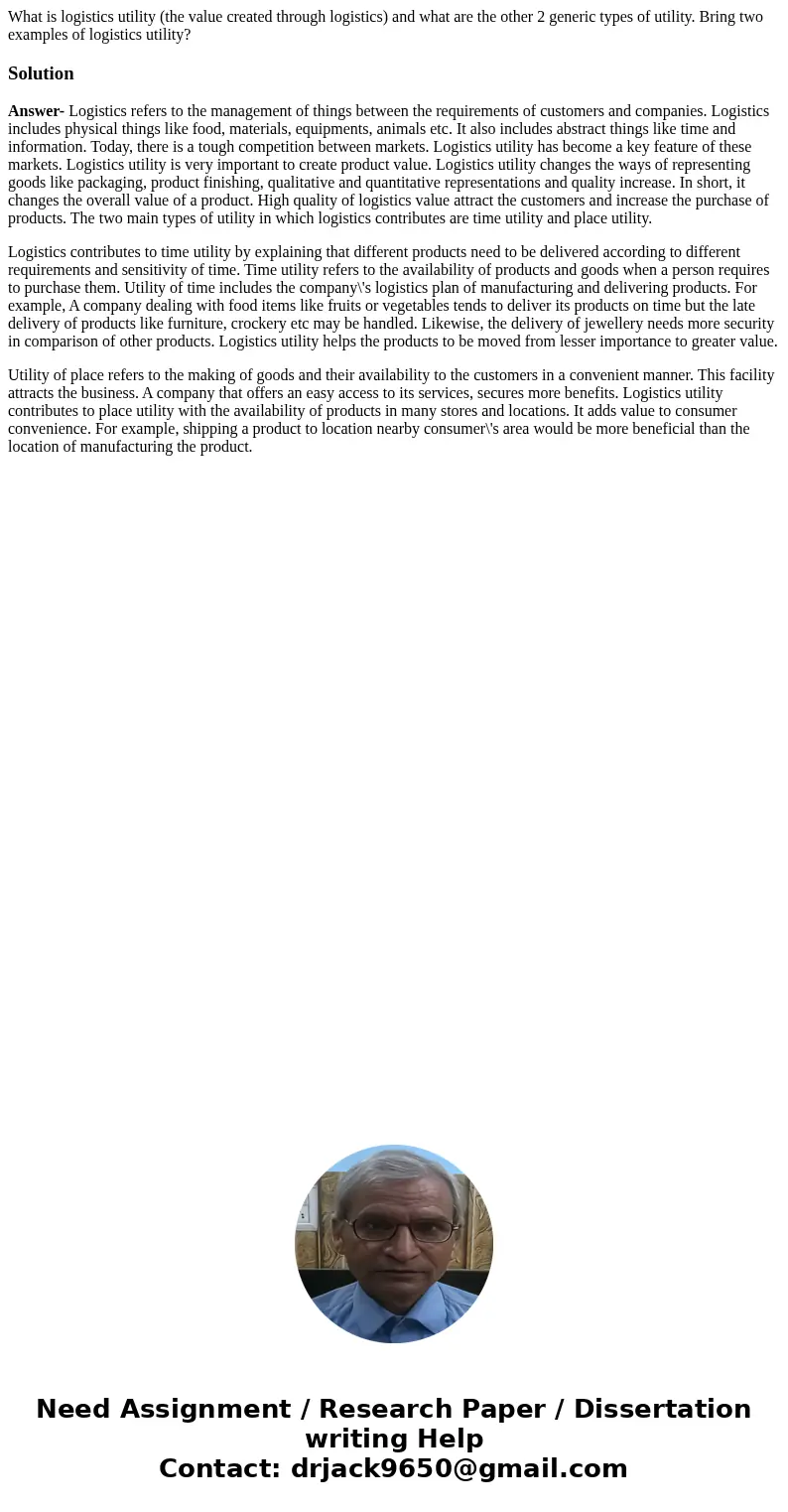What is logistics utility the value created through logistic
What is logistics utility (the value created through logistics) and what are the other 2 generic types of utility. Bring two examples of logistics utility?
Solution
Answer- Logistics refers to the management of things between the requirements of customers and companies. Logistics includes physical things like food, materials, equipments, animals etc. It also includes abstract things like time and information. Today, there is a tough competition between markets. Logistics utility has become a key feature of these markets. Logistics utility is very important to create product value. Logistics utility changes the ways of representing goods like packaging, product finishing, qualitative and quantitative representations and quality increase. In short, it changes the overall value of a product. High quality of logistics value attract the customers and increase the purchase of products. The two main types of utility in which logistics contributes are time utility and place utility.
Logistics contributes to time utility by explaining that different products need to be delivered according to different requirements and sensitivity of time. Time utility refers to the availability of products and goods when a person requires to purchase them. Utility of time includes the company\'s logistics plan of manufacturing and delivering products. For example, A company dealing with food items like fruits or vegetables tends to deliver its products on time but the late delivery of products like furniture, crockery etc may be handled. Likewise, the delivery of jewellery needs more security in comparison of other products. Logistics utility helps the products to be moved from lesser importance to greater value.
Utility of place refers to the making of goods and their availability to the customers in a convenient manner. This facility attracts the business. A company that offers an easy access to its services, secures more benefits. Logistics utility contributes to place utility with the availability of products in many stores and locations. It adds value to consumer convenience. For example, shipping a product to location nearby consumer\'s area would be more beneficial than the location of manufacturing the product.

 Homework Sourse
Homework Sourse